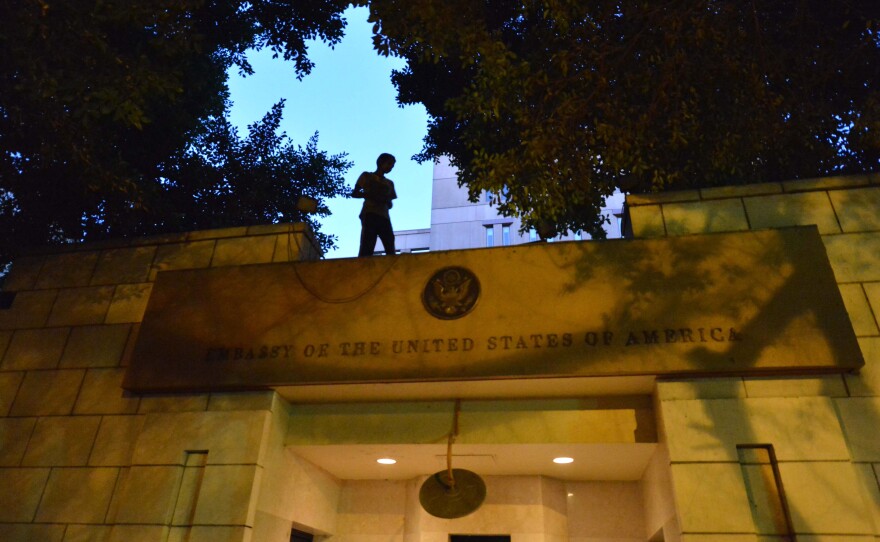There's been a tug of war between aesthetically pleasing and safe when it comes to American embassies around the world.
Many embassies have been slammed as bunkers, bland cubes and lifeless compounds. Even the new Secretary of State John Kerry said just a few years ago, "We are building some of the ugliest embassies I've ever seen."
But the choice between gardens and gates isn't just academic for diplomats — it can affect the way they work. Many diplomats found that the isolation, distance from city centers and lack of accessibility of many embassies complicated their job.
In the past few months, several articles in the American Foreign Service Association's journal have been devoted to "fortress embassies" and the effort to improve design.
"After World War II we were facing a world that was emerging out of a war and [we] wanted to use modern architecture as a way to convey our values, and a spirit of openness, optimism, democracy, and so we thought of architecture as a tool," Susan Johnson, a veteran diplomat and president of the association, tells All Things Considered's Audie Cornish.
However, with cost always a consideration and safety always a priority, there was a shift to the more prisonlike embassies that have drawn criticism of late. Now, that's changing, with help from a State Department initiative — Design Excellence — that includes a promotional video describing art, design and architecture as diplomatic languages.
"I think what we're aiming to do now is find a balance that combines security and beauty, and use technology and innovation to do it," Johnson says. "If we're going to do it, let's make that building say something positive about America."
You can hear more of this conversation on Tuesday's All Things Considered.
Copyright 2021 NPR. To see more, visit https://www.npr.org. 9(MDEwMTk5OTQ0MDEzNDkxMDYyMDQ2MjdiMw004))














